Nvidia staff say Jensen Huang is not easy to work with, but that’s how leaders should be, says the CEO

Demanding. Perfectionist. Not easy to work with.
These are some of the words Nvidia employees have used to describe the company’s CEO, Jensen Huang.
However, in a recent interview with 60 minutes, Huang said that’s how a leader “should be” to be able to “achieve extraordinary things”.
The CEO’s intense approach has seemed to have paid off, though. Today, Nvidia is amongst the only four companies in the world to be valued at more than US$2 trillion after its stock market value doubled over the past eight months with the rise of artificial intelligence (AI).
Jensen Huang’s unconventional leadership style
Huang has always had a reputation for being a formidable boss. In an interview with Stanford’s Graduate School of Business earlier this month, he discussed his leadership style, saying that CEOs should, “by definition”, have the most direct reports of anyone at a company.

“The more direct reports the CEO has, the less layers are in the company,” he added. “It allows us to keep information fluid, allows us to make sure that everyone is empowered by information.”
I don’t believe in a culture, in an environment, where the information you possess is the reason why you have power.
– Nvidia CEO Jensen Huang in an interview with Stanford’s Graduate School of Business
Presently, Huang has 50 direct reports. He believes that managers’ roles shouldn’t revolve around mediating power dynamics among employees but rather collectively motivating the workforce.
Working minimum-wage jobs shaped him to become a successful CEO
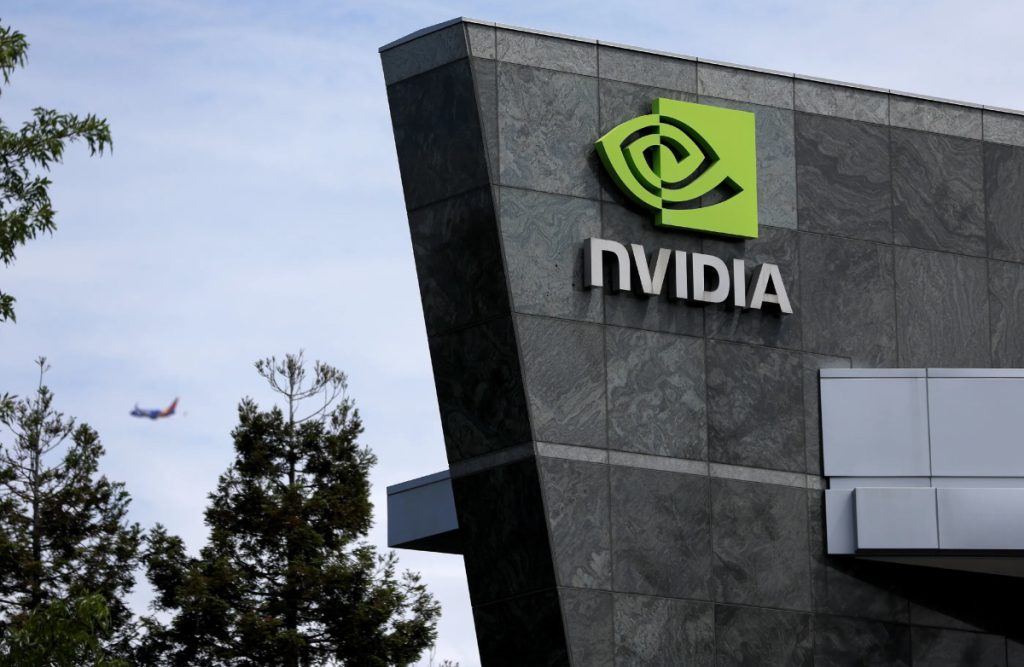
At the root of it all, Huang attributes his humble beginnings working in minimum wage jobs as the foundation for his strong work ethics, ultimately propelling him to success in his role as CEO.
“No task is beneath me … remember I used to be a dishwasher,” he said, referring to his first job at Denny’s, an American diner-style restaurant chain. “I was probably Denny’s best dishwasher… I washed the living daylights out of the dishes.”
Huang also said that he has worked just as hard as a corporate employee as he did cleaning toilets in the past—and he’s had his fair share of toilet-cleaning experience. “I have cleaned more toilets than all of you combined,” he joked.

But if he could foresee the immense challenges of building and sustaining Nvidia, Huang has openly admitted that he probably wouldn’t do it again.
In an interview on the Acquired podcast last year, he confessed that building a company like Nvidia proved to be “a million times harder” than he expected it to be. “No one in their right mind would do it.”
Yet, if it hadn’t been for his ignorance, Nvidia wouldn’t be where it is today.
When looking at the broader startup landscape, he emphasised that this ignorance, or rather, the lack of full awareness of the difficulties ahead, is a vital quality for all founders striving to propel their startups to success.
I think that’s kind of the superpower of an entrepreneur. They don’t know how hard it is. And they only ask themselves: ‘How hard can it be?’ To this day, I trick my brain into thinking: ‘How hard can it be?’
– Nvidia CEO Jensen Huang in an interview on the Acquired podcast
Featured Image Credit: TheStreet /Shutterstock /Slaven Vlasic /Stringer /Getty Images
Also Read: Don’t learn to code: Nvidia’s founder Jensen Huang advises a different career path
Ninja Van axes 10% of regional tech team, more than 20 employees in S’pore affected
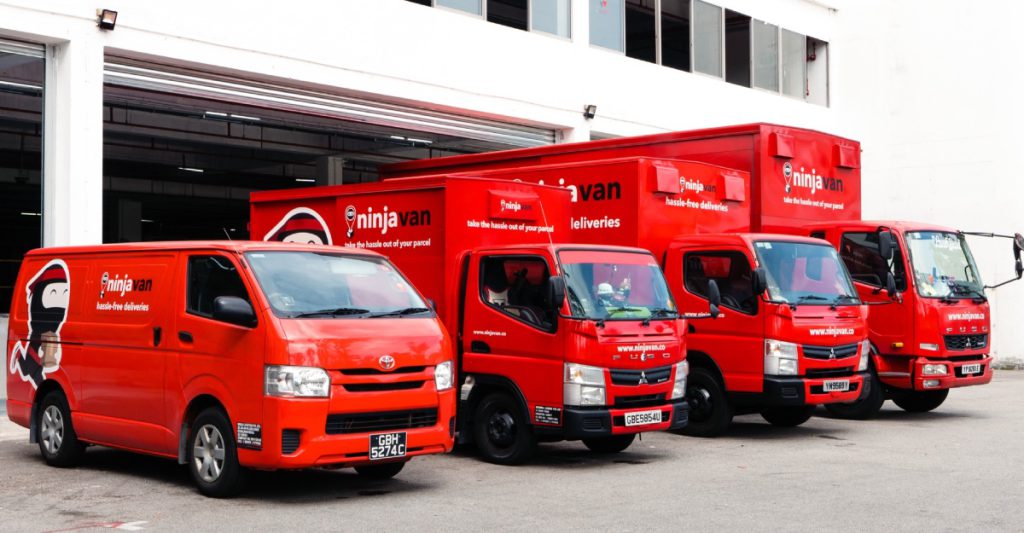
Following a “cost evaluation”, Ninja Van has laid off about 10 per cent or 21 employees of its tech staff on Monday (April 29) after it determined that they were “no longer required”.
The employees were all based in Singapore, and represented about 20 per cent of the tech team in the city-state, the Business Times reports.
According to a source familiar with the matter, the cuts were across the board and not focused on any particular team.
Affected employees were informed after an all-hands tech team meeting on Monday, while those who were not laid off were given the rest of that day off. All meetings for the day were cancelled to give teammates “privacy and space to process the news”.
When contacted by Vulcan Post, a Ninja Van spokesperson said that these employees would receive a “reasonable severance package to support their transition beyond Ninja Van”.
This includes garden leave until the official last day in May 31, 2024, one month of severance pay per full year of employment, and an extension of medical insurance and mental health support, valid until June 30, 2024.
They will also be kept in the company chat and given office access till the end of the week to facilitate proper farewell.
Meanwhile, for those with unvested share options, their deadline for exercising vested options was extended from 30 days to a year.
“An absolute last resort”
“Layoffs are an absolute last resort, and we have done all we can to cut costs across the organisation, but sadly, it still wasn’t enough,” said Cheehan Tee, Ninja Van’s vice president for engineering in an email sent to staff.
However, he stressed that Ninja Van is “not cutting the size and capability” of its tech team but is “optimising” associated costs.
Ninja Van’s layoffs come after the logistics company’s revenue declined 7 per cent year on year in FY2023, mainly due to an almost 20 per cent drop in parcels handled. Its operating losses also grew 32 per cent in the same period.
Despite this, Ninja Van’s CEO, Lai Chang Wen, expects the company to report EBITDA breakeven in 2025 with the firm’s expansion into new verticals apart from e-commerce, including its B2B arm Ninja Mart and its cold chain logistics business.
Featured Image Credit: Ninja Van Singapore
Also Read: Yahoo axes editorial and social media teams in S’pore, 17 staff affected
S’pore employment levels continue to increase for Q1 2024 as no. of retrenchments decline
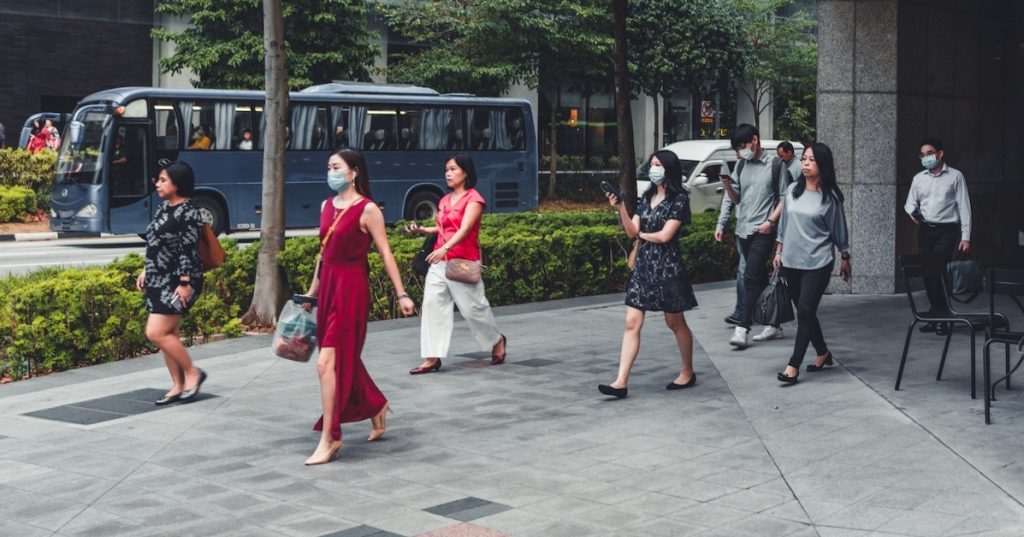
Singapore’s employment levels continued to expand in the first quarter, but at a moderated pace compared to the previous quarters, according to an advance release by the Ministry of Manpower (MOM) published on Tuesday (April 30).
At the same time, retrenchments have also declined for the second consecutive quarter, from 3,460 in the last quarter last year to 3,000.
These trends follow the cooling labour demand in 2023, as downside risks in the global economy remain.
There has been an increase in resident employment, mainly in growth sectors such as:
- Financial Services
- Health and Social Services
- Public Administration & Education
Following the end of the festive period, the rise of employment in the above sectors outweighed the seasonal declines in the retail, food and beverage, and hospitality industries.
However, unemployment rates increased slightly in March 2024 to 2.1 per cent overall from 2 per cent in February. Despite the increase, MOM shared that it is within the range observed during non-recessionary periods.
“We do not expect sustained increases in unemployment rates, given continued labour market tightness,” MOM said.
According to polls conducted by the board, more firms have displayed intentions to hire in the next three months, with the percentage increasing from 47.7 per cent to 50.7 per cent.
That being said, wage improvements could slow, as the proportion of firms intending to raise wages declined from 32.6 per cent to 26.1 per cent.
The full report on the labour market’s performance for the first quarter will be released in mid-June.
Featured Image Credit: National Trade Union Congress (NTUC)
Also Read: S’pore’s best employer survey: Tech giant Apple takes the top spot, followed by Google
We give the KL20 Summit an A for effort, but here’s what we need to see the next time
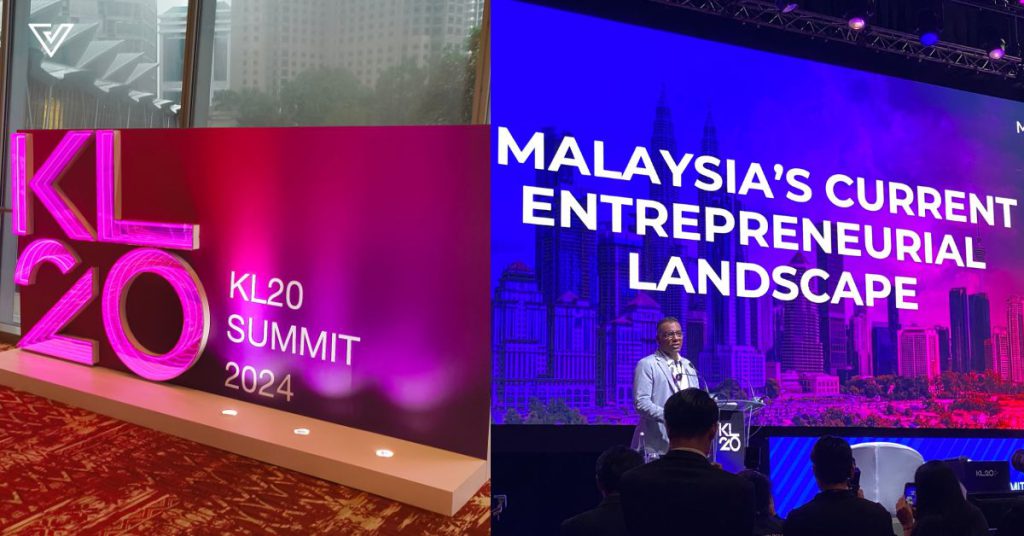
On April 22 and 23, the Kuala Lumpur Convention Centre was buzzing with entrepreneurs, investors, government officials, and of course, the media. We had all gathered for the inaugural KL20 Summit, an event designed to propel Kuala Lumpur forward as a top 20 startup hub in the world.
An ambitious summit, KL20 featured a myriad of panel discussions, fireside chats, and showcases. A key part of the event had been the introduction of the Action Paper, which outlined initiatives that are already underway in order to “unleash” our economy.
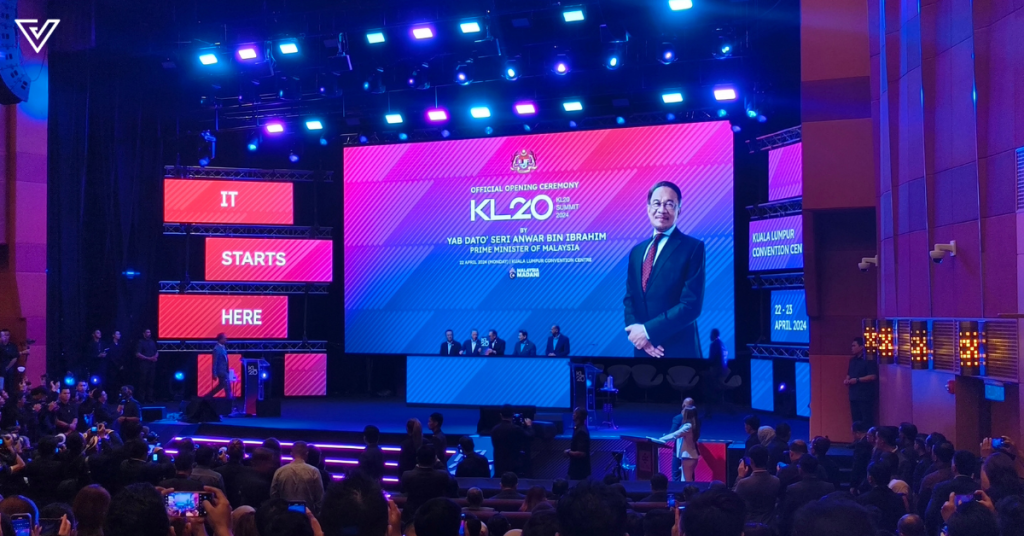
The Action Paper was no doubt inspiring and showed off the government’s thoughtfulness in creating programmes that can further our nation. But what about the rest of the event?
The Vulcan Post team was there on both days, tuning in to almost all the main events. Like many others, we had high hopes for the event, especially considering the star-studded lineup of speakers highlighted. Did KL20 meet those expectations?
Missing the memo?
Prior to KL20, we came across Minister of Economy Rafizi Ramli’s social media posts about the event.
In one post in particular, he stated that KL20 is not just for “techies”, as it served as a launchpad for “a new era of high-skilled jobs in Malaysia”, regardless of industry.
“At KL20, you’ll be part of it. KL20 should matter to you, no matter your field. Lawyers, startups need legal muscle to navigate regulations. Your expertise could be the missing piece. Accountants, every startup needs financial wizards,” he stated.
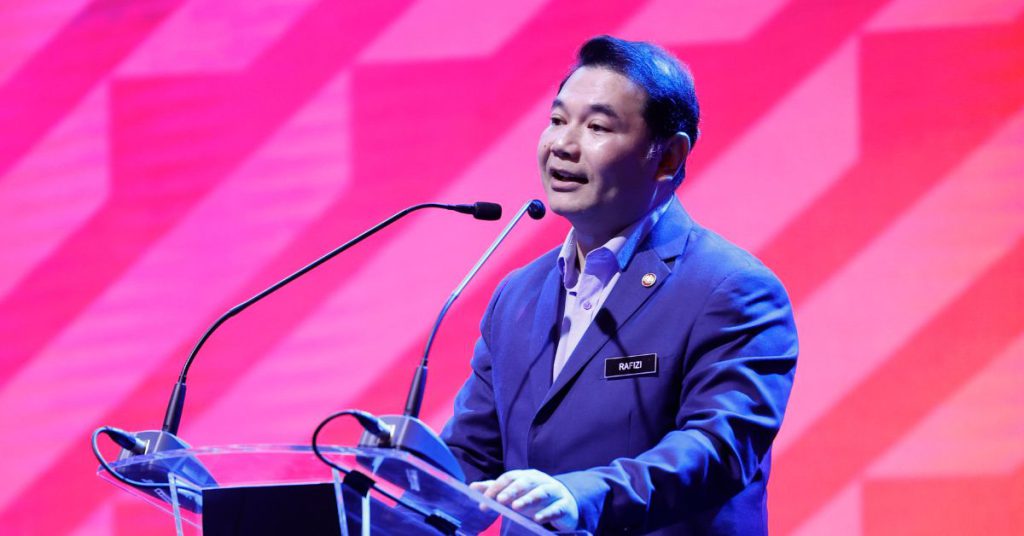
But how true was that? Did lawyers and accountants really have something to gain from the event? Was there a platform for them to showcase their talents?
Our answer is a resounding no.
Of course, we understand that in the bigger picture, lawyers and accountants will definitely benefit from the ethos and vision of KL20. But to imply that they specifically would benefit from attending the KL20 Summit is not true.
Many of the conversations were centred around describing and contextualising various industries, which is great for people to get a feel for the potential that Malaysia and Southeast Asia holds. But to us, many of the talks did not impart practical roadmaps or answer burning questions that may give talents a leg up in the economy.
We also noticed that KL20 was being advertised as a place where people can “learn and develop skills”, which again felt untrue. While insights, knowledge, and connections were certainly offered at the event, skill and capacity-building were not facilitated over the two-day event.
For this to be true, KL20 would have required workshops, not panel discussions.
While some entrepreneurs posted their disappointments online, stating that the KL20 summit did not give much value to startup entrepreneurs, there were others yet who praised the event for connecting stakeholders.
In their sharing, it sounds like KL20 did present great networking opportunities, but it’ll take time to determine whether all this networking will manifest into real projects, collaborations, and growth.
A one-way conversation
It was great to see the government of Malaysia bringing in top speakers and industry experts such as Nothing CEO Carl Pei, ex-Fave founder Joel Neoh, Startup Genome’s Stephan Kuester, and so many more industry leaders.
But I felt that their expertise and insights were not maximised—at least not for the general public.
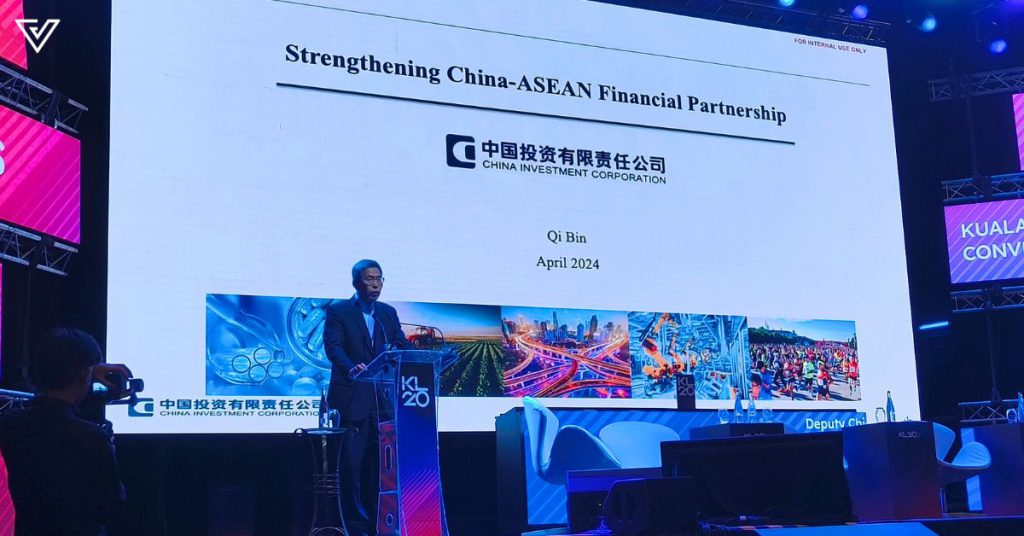
One disappointing factor of the event was that instead of dialogues, it was more like one speech after the next. In order to really make attendees feel “part of” the conversation, as our Minister of Economy said, I believe a two-way exchange must be facilitated.
This all comes down to the fact that there were no Q&A sessions. Not for media personnel like ourselves, not for founders, not for talents.
The audience, which thinned out over the two days, were not given an opportunity to have any comments or submit any questions to the speakers. That feels like a missed opportunity.
Sidelining local talents?
Overall, it seemed like the target audience for the summit wasn’t local investors, startup founders, or talents. It felt like it was more to attract foreign visitors, to draw them in to Malaysia.
And there’s absolutely nothing wrong with that. Inviting foreign capital and talents is a key part of developing our country’s economy. I just wished there was more value, too, for local entrepreneurs and talents who took the time to attend the event.
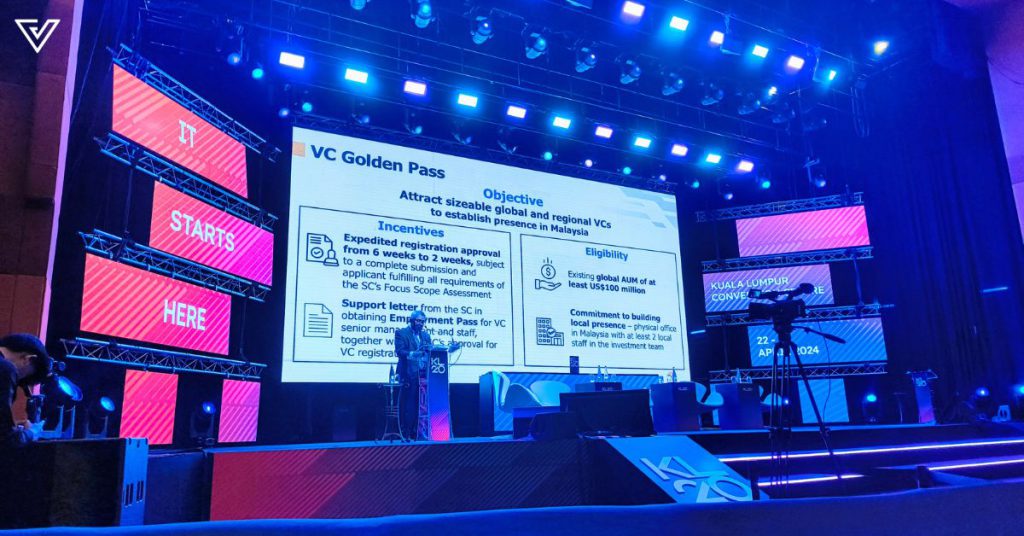
Sure, there were some local names being featured in some panels as well as the showcase, but that’s not the point.
Featuring local entrepreneurs doesn’t mean fostering local entrepreneurs if the conversations they’re having are exclusionary and not even focused on how to develop said local entrepreneurs. I believe one or two panels that were focused on educating and inspiring Malaysian founders and talents would have been appreciated.
And instead of just having just a “founder stage”, “leader stage”, and a “catalyst corner”, which were the main sections of the event, more resources for job seekers and talents would have been great. Why not a job fair that runs concurrently? Why not a panel on how local talents can upskill, or what foreign MNCs look for when hiring?
This much, I believe, would have made a huge difference.
A promising future
The bright side is, there’s only up from here.
We don’t know whether KL20 will be a recurring annual event, but if it is, we hope to see improvements being made based on this summit.
All that said, I believe the event overall was an inspiring one, giving us a clearer picture of what the government is aiming for, and how ecosystem players are coming together to work towards that vision.
And just because we have some critiques doesn’t mean we did not gain great insights during the event. In fact, we’ve learnt a lot, and will be sharing more of our learnings soon.
There’s always room for improvement, though, so hopefully, the next summit of this kind will be more robust, facilitating more dynamic conversations, candid dialogues, and inclusivity with more parts of the ecosystem.
- Learn more about KL20 Summit 2024 here.
- Read other articles we’ve written about Malaysian startups here.
Also Read: How financial institutions & universities are reshaping their network through AI-native solutions
S’pore’s best employer survey: Tech giant Apple takes the top spot, followed by Google
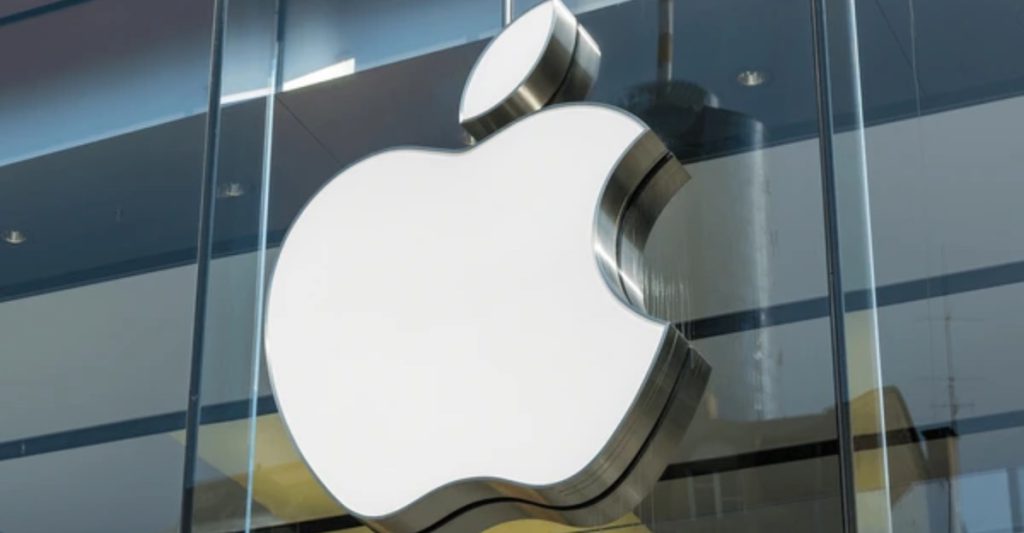
In a survey jointly released by The Straits Times and global research company Statista today (April 30), Apple came in first on a list of Singapore’s Best Employers among companies and institutions with a workforce of at least 200 employees in the country.
Google secured the second spot, followed by Asia Pacific Breweries Singapore (Heineken Asia Pacific), German multinational enterprise Siemens and Motorola Solutions Singapore.
The survey, which gathered insights from more than 14,000 employees from over 2,000 employers in 27 industry sectors, scored employers based on two elements: each employee’s willingness to recommend one’s own employer, and their willingness to recommend other employers in their industries.
The highest overall scores were attained by employers from the clothing, biotechnology and food industries. This could be linked to the general recovery of these sectors with the travel economy rising back to pre-pandemic levels and demand for and supply of goods rebounding, said Jana Meusel, the team lead for employer analysis at Statista R.
There is a greater emphasis on work-life balance and remuneration
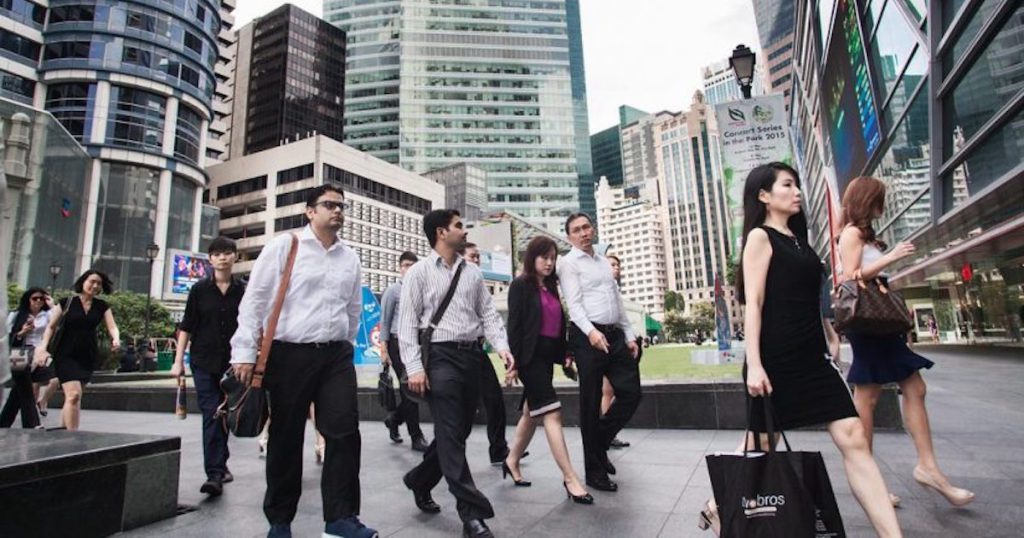
As digital connectivity continues to expand, blurring the lines between professional and personal time, the survey revealed that dissatisfaction work-life balance is a main reason why employees choose to leave an employer.
There is also a correlation between employees’ satisfaction with their work-life balance and their willingness to recommend their employers to others. The more satisfied they were with their work-life balance, the more willing they were to recommend their employers.
Additionally, salary has become a more important factor for employee satisfaction worldwide, including in Singapore, following uncertainties from the pandemic and inflation.
For businesses to maintain their competitive edge in the labour market, it’s vital for them to align themselves to the values and expectations of the workforce, especially the younger generation. In the future job world, these younger employees are increasingly looking for purpose and diversity in their roles.
For the Lego Group, which came in at No. 8 on the list, Amrita Singh, its head of people-partnering for the Asia-Pacific and Singapore hub, told The Straits Times that the company “offers staff a place where they can unleash their creativity and imagination”. “Play is synonymous with our brand, and we are constantly finding new ways to uniquely integrate play into the work we do every day.”
Meanwhile, Google Singapore holds town halls and podcasts with senior leaders to engage in open dialogue, where they share their personal reflections on the business to build trust and connection with other colleagues.
According to Ben King, the managing director of Google Singapore, the company “regularly checks in” on its employees through “pulse surveys and conversations” to better understand their experiences and thoughts on productivity and well-being, besides giving them the autonomy to manage their time and environment.
Featured Image Credit: Shutterstock
Also Read: Yahoo axes editorial and social media teams in S’pore, 17 staff affected
The latest games that people should try out
The world of gaming is dynamic and ever-evolving. There are many reasons why these games are so popular. They provide immersive experiences, they allow the player to explore the world which is beyond the mundane of everyday life. These games are available in multiple formats from PC games to console games to mobile platforms.
The gaming consists of no barriers for age, background and geography. They are known for bringing people together. They allow the players from different communities to share strategy, celebrate victory, plat together, sympathise together after defeat. Every step is a thrill of competition and joy of discovery.
For those who are eager to dive in the latest games, it is very important to stay updated with the newest releases. Among the titles making waves is Big Bass Bonanza from Virgin Games, a game that offers an engaging experience for enthusiasts looking to reel in some fun. The best place to get further information about this game is the Virgin Games platforms.
This article aims to highlight some of the latest games that are capturing attention within the gaming community. The games which are promising hours of enjoyment, the games which are offering richer graphics and a lot more to experience.
Discover the Latest Gaming Sensations
The gaming landscape is evolving day by day. Every developer is pushing their boundaries to create a better experience for the players. These days the games are offering engaging and visually stunning graphics.
Dive into Big Bass Bonanza
If you’re looking for aquatic wonders then Big Bass Bonanza offers a refreshing dive into the virtual deep blue ocean. The game is hosted on Virgin Games and stands out in terms of graphics and gameplay.
Open Roads
If you’re looking to traverse your selected vehicles on a racing track then open roads was released in February 2024. This game will throw you behind the different types of vehicles from different eras. Explore a diverse open world, compete in races, or just cruise the scenic landscapes in this celebration of automotive culture.
2024 South Park: Snow Day
Another outrageous gaming adventure can be found in 2024 South Park: Snow Day. This is a newer version of the hit game from 2012 and it is known for humour and antics. You can experience a lot of opportunities to wreak havoc in the snow-covered town of South Park.
Dragon’s Dogma 2
If you’re a fan of action RPGs then the latest arrival is the Dragon’s Dogma 2. This is yet another sequel from the fantasy world of Dragon’s Dogma. The latest version offers a fresh narrative and new characters to meet. You will also get opportunity to explore hidden dungeons and even forge your own legend in the adventure.
Rise of the Ronin
One more action game in the list is the unforgiving world of feudal Japan with Rise of the Ronin. Ronin is a samurai without a master and he navigates a land which is filled with danger. In this game, you’ll get a chance to crave your own path, engage in intense sword fights and establish your own destiny.
Accessibility and Inclusivity
In today’s world, graphics is not the highest priority for the games. The priorities have now shifter more towards accessibility and inclusivity which has made the games more approachable to a wider audience. Developers take into account that the players should be easily players by beginners as well as expert player.
Conclusion
The gaming world in today’s era is richer and more diverse in terms of preferences and interests. From the serene fishing adventures in Big Bass Bonanza to the high-octane thrill of the latest racing games. There are RPGs available, snow adventures available, in short, there’s something for everyone today.
These games not only offer unparalleled entertainment but also bring people together, building communities and fostering connections through shared experiences. The evolution of gaming technology and the creativity of developers continue to push the envelope, promising even more exciting developments in the future.
Here we have only reflected the latest games that have captures our attention the most. The gaming itself remains a dynamic part of our culture. There are no bounds to any level of imagination and the possibilities are endless. If you’re looking for adventures, there’s plethora of options to explore and each option promises its own unique brand of excitement and discovery.
Looking at the future today, we can clearly say that there’s a lot more in store in the world of gaming. Every developer is exploring new ideas, implementing new technologies, creating new narratives, and trying their best to provide us an exciting adventure. For gamers, this means an ongoing journey of discovery, filled with endless hours of enjoyment and new experiences waiting around every corner. The latest games on the market today are just the beginning of what promises to be an exciting chapter in the story of gaming.
Yahoo axes editorial and social media teams in S’pore, 17 staff affected

Search engine giant Yahoo is reportedly axing its editorial and social media teams in Singapore.
According to a news report by The Edge Singapore, 17 employees will be leaving the digital news publication by May 7, and have previously met with a human resources representative on April 23.
Simon Wheeler, Yahoo’s senior director of content for Australia and Southeast Asia, was reported to be present at the meetings.
Retrenched employees were told that the company is changing its editorial strategy and will no longer create original content from Singapore, and they can apply for new roles within the organisation. It is worth noting that all jobs posted are performed remotely.
According to an anonymous source, affected staff will receive slightly more than two weeks’ pay per year of service.
Yahoo will hire three “curation editors” and a market lead for Yahoo News Singapore under its new strategy, which will focus on syndicated content. Newsrooms contributing syndicated content to Yahoo include HuffPost, AFP News, Reuters, EdgeProp and The Edge Singapore, among others.
A Yahoo spokesperson told The Straits Times that the company is shifting its editorial strategy to better align with strategic priorities for Yahoo Singapore.
“Readers can expect to continue seeing the content they most regularly engage with and enjoy. We remain focused on delivering a diverse selection of high-quality and engaging news, lifestyle and finance content, from local and international sources,” said the spokesperson.
Employees were caught off guard by the layoffs
The Edge Singapore understands that Yahoo holds “open houses” monthly, where leaders share business updates.
However, some employees who were affected shared that they were thrown off by the news, as there was no indication then that the company would be enacting a fresh round of layoffs in Singapore.
We didn’t expect these [layoffs] and it happened at a weird time in April. For us, everything has been business as usual and we didn’t hear any news of a possible retrenchment.
We did hear of a retrenchment round in Yahoo US a couple of months ago and did think that some markets that did not do well may face the same consequences.
An employee who spoke to The Edge Singapore on the layoffs
Previously, Yahoo laid off seven journalists based in Singapore in 2022, following their last reported retrenchment exercise in 2016. The Straits Times has also shared that Yahoo is not unionised in the city-state.
Separately, in February 2023, the US media giant said it aims to eliminate about 1,000 jobs or roughly 12 per cent of its headcount. That was the first round of cuts in a larger plan to restructure its advertising tech division.
Yahoo was known as the pioneering search engine, and the default web portal for many before Google exerted its dominance. The company changed its ownership multiple times, first by US telco Verizon, which took it private in 2017 and sold it for US$5 billion in 2021 to private equity firm Apollo Global.
Featured Image Credit: Yahoo via LinkedIn
Also Read: The layoffs continue: Google announces another round of job cuts, moves roles to other countries
Why this M’sian family has been preserving an 87 Y/O boutique hotel in Cameron Highlands
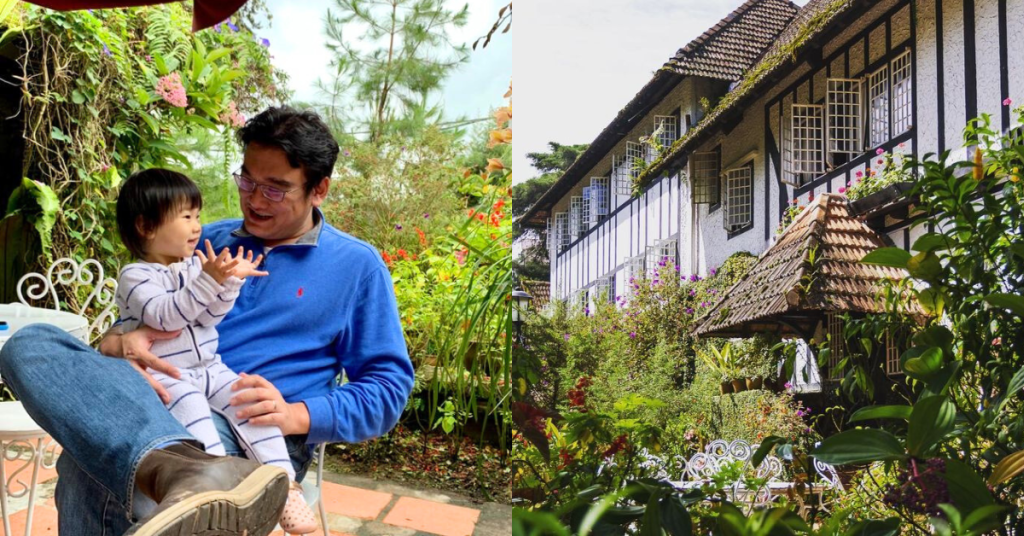
With its classic white exterior and a blooming English garden, the Smokehouse Hotel‘s Tudor architectural designs make it look like a relic left behind from colonial times.
That’s because it is.
Founded by William J Warin in 1937, it used to be called “Ye Old Smokehouse Inn” and served as a home away from home for British expats living in Malaya. People weren’t able to go home as often as air travel wasn’t common yet, which made the inn a communal space for the homesick Englishman.
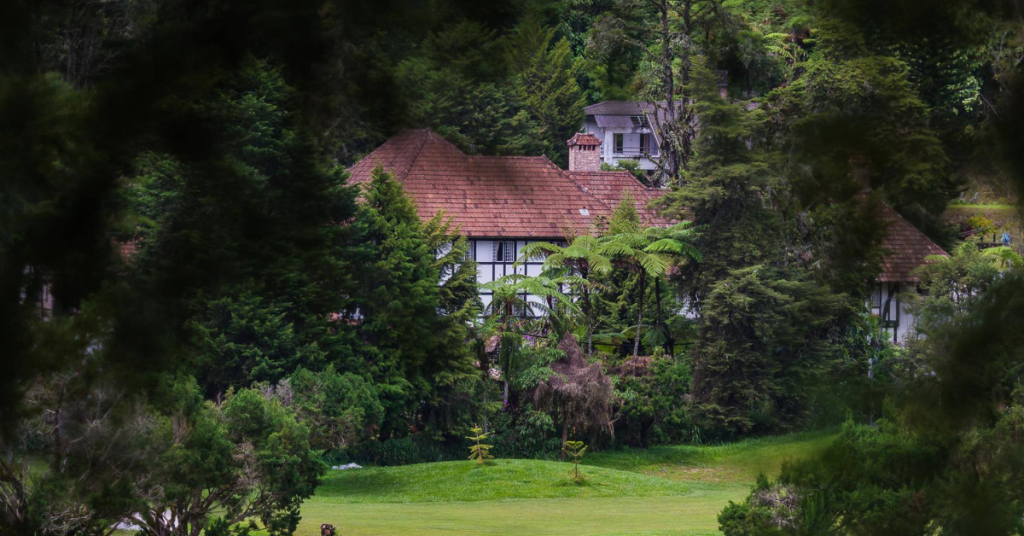
Being an establishment in that era, the inn only catered to Europeans at the time. This left its beauty essentially hidden from the locals.
But that’s not the case anymore thanks to Malaysian anglophile Peter Lee. After purchasing it from Lieutenant Colonel Stanley Foster in 1977, he opened the hotel to the public.
Now, travellers of all backgrounds from in and out of Malaysia come to experience the 87-year-old historical accommodation for themselves.
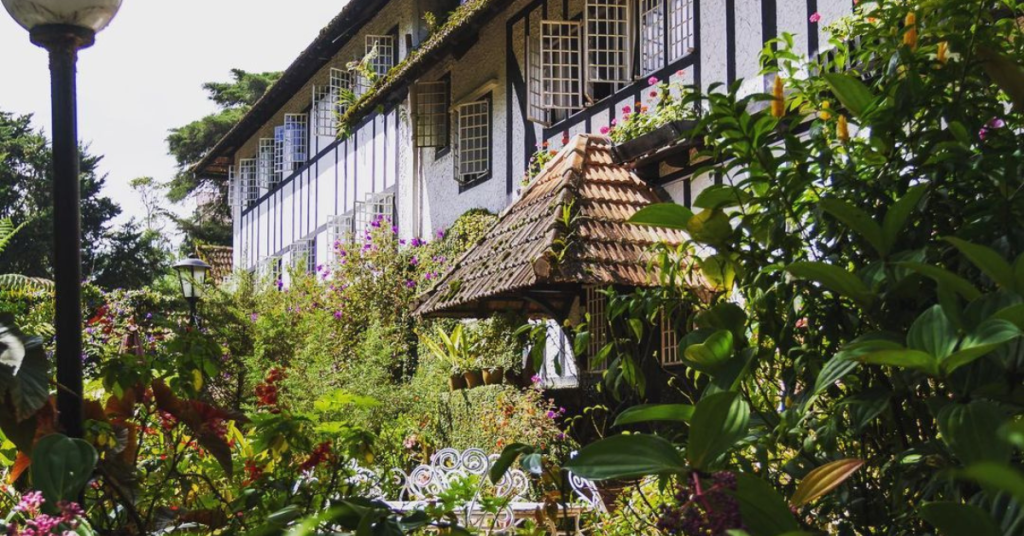
Keeping the look and feel authentic
“If you look at a lot of boutique heritage hotels and properties in Malaysia, what you get is a very authentic front but then it becomes a normal hotel,” Alex, Peter’s son and the current general manager, stated.
“We’re not quite like that in the sense that we run ourselves as a staff body, kitchen, and hotel upkeep. Country house hospitality is our motto and we try our best to run it as an English country house.”
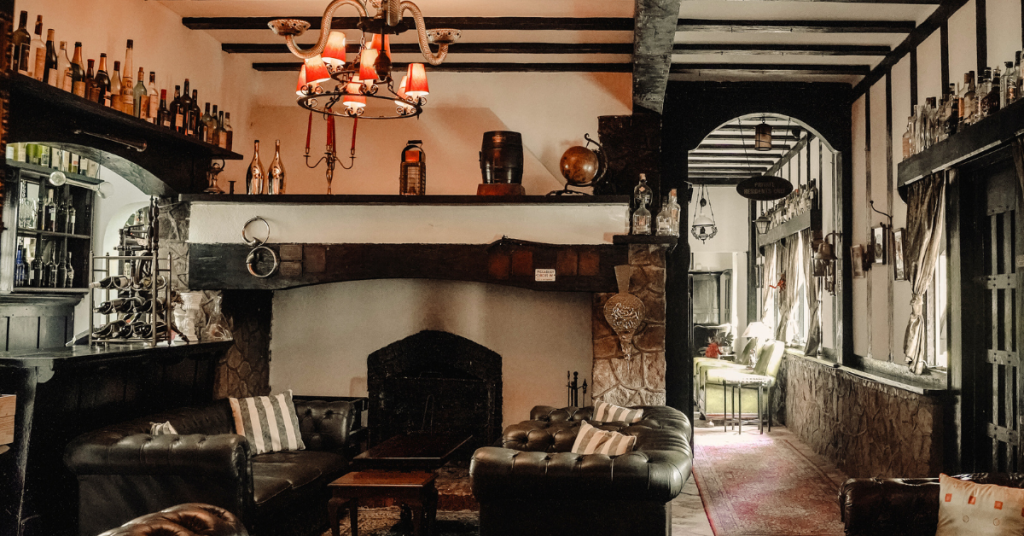
This is not just in terms of the look of the place, though they do spend a hefty amount to maintain its British roots. About 95% of the arts and furnishings at the Smokehouse Hotel are either exclusively imported from antique stores in Europe or custom made to fit the aesthetics of the space.
As such, you’ll find an eclectic collection of antiquated furniture and trinkets in every corner. The toilet holders are made of brass from the Victorian era, their ceramics are Dutch, and their clocks are from old Italy and France.
This is also why all of its 23 rooms are designed differently. In fact, there’s probably no two lamps that are the same either.
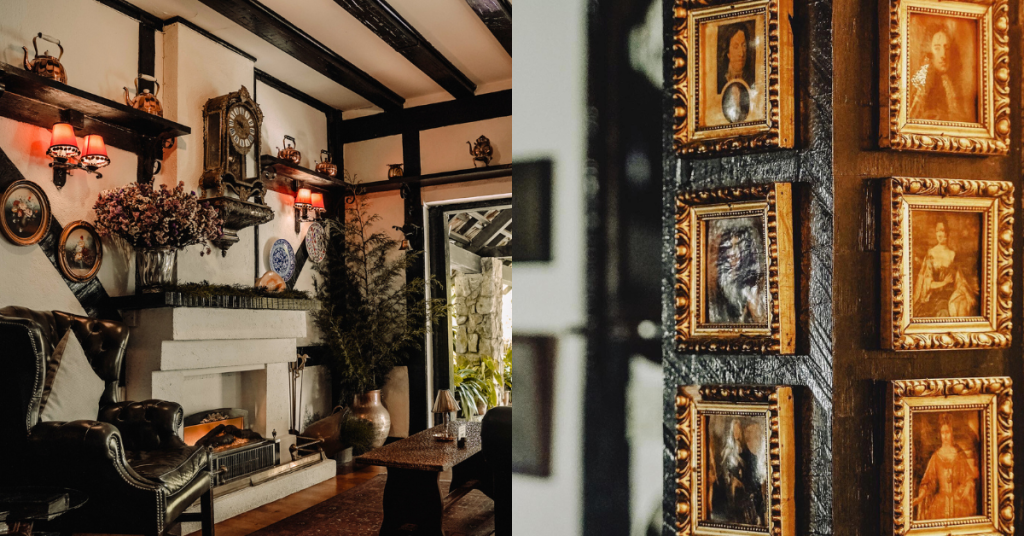
Speaking to Vulcan Post, Alex admitted that it can be quite challenging to source for antiques this way especially since it required building trust with the sellers. You can’t be too cautious, as there have been tales of people getting conned into buying fake antiques.
But it’s a challenge that Alex and his family happily take up to ensure that the hotel stays true to its roots. He’d usually travel to the UK to hunt for these while visiting relatives there.
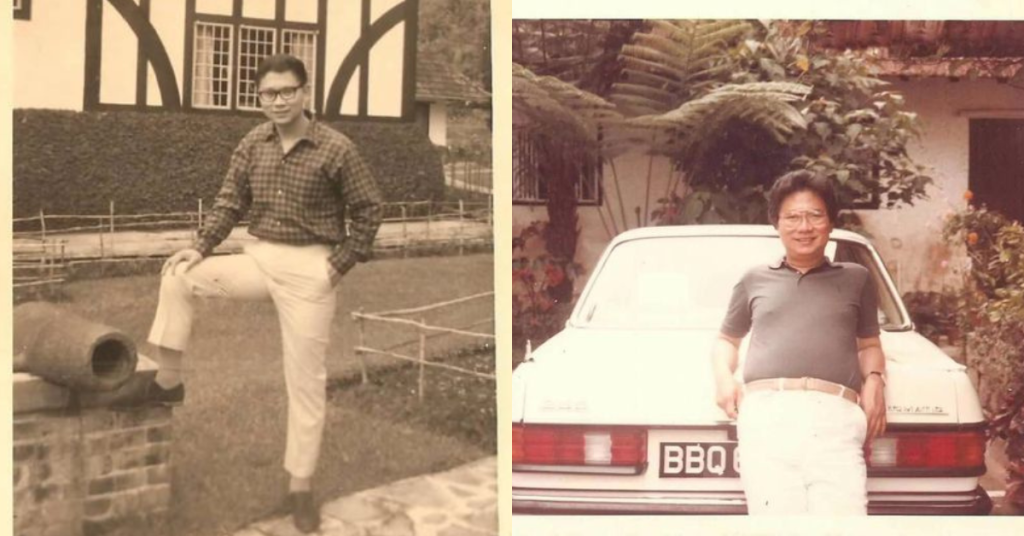
Subtle changes while staying true to its roots
Aside from aesthetics, another way Alex’s family is keeping the hotel as authentic as possible is by continuing to serve classic English fanfare.
Dubbed “the finest English restaurant in the Highlands”, its in-house restaurant’s menu consists of British staples like roasts, cottage pies, cod and chips, steaks, and puddings.

Though their clientele is mostly locals nowadays, the hotel has not adapted its menu to suit the Malaysian palate. Instead, they look towards the English gastropub scene for inspiration to innovate.
Alex explained that the current F&B trend there emphasises fresh and seasonal ingredients. This is something that we’re also observing more often these days following the food challenges that the pandemic brought about.
So the Smokehouse Hotel has been working to emulate this in its R&D endeavours.

An example Alex shared is their savoury beetroot macaron, which is beetroot cured salmon served with avocados and topped with beetroot meringue. The produce is sourced locally from Cameron Highlands. This dish used to only be for special events some months ago but can since be found on its main menu.
It’s probably this blend of heritage food with measured changes that has helped its restaurant earn a name for itself and kept people coming back for more.
Both a heritage and family legacy
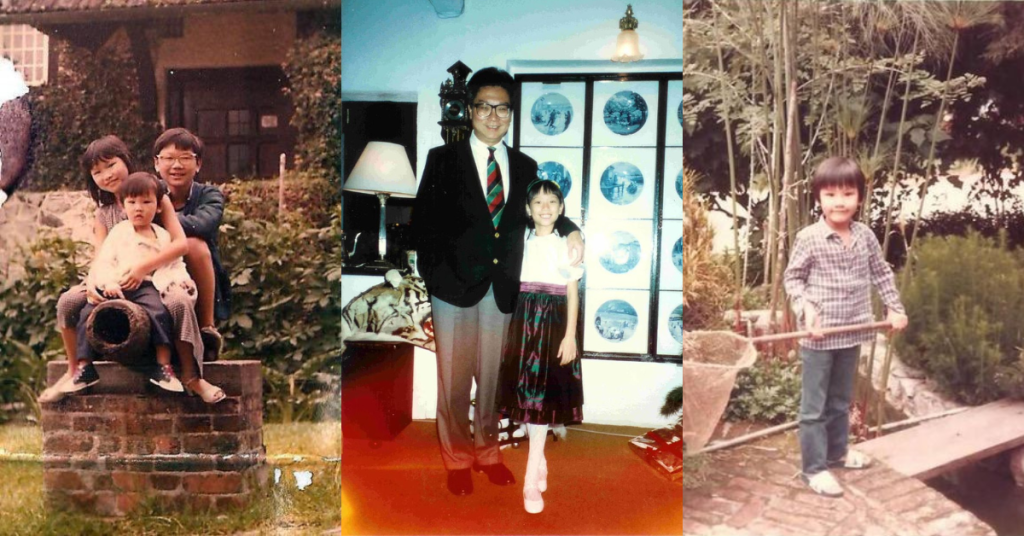
“To a lot of people, we are like a living museum,” Alex shared. “We have people coming from the UK for summer holidays and they go, ‘This is more English than what I’m used to’. That speaks to our aim to be authentic.”
That said, the Smokehouse Hotel isn’t an old-fashioned stay that can’t keep up with the times.
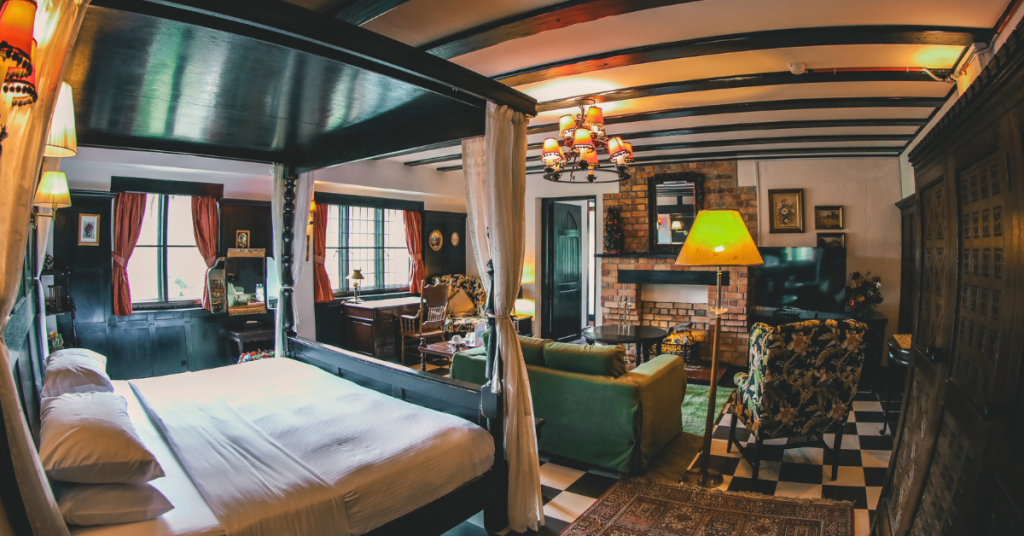
The hotel has been making gradual incremental changes to its furnishings. They still use physical keys but WiFi and Espresso machines have been introduced. Most of its TVs are getting switched to smart TVs within the next few months.
However, more than just being unashamedly a throwback of a bygone era, the Smokehouse Hotel is essentially the continuation of a family legacy.
Speaking openly, Alex shared that his father passed away in early 2008 and didn’t really leave a successor for the business. All four of Peter’s children had their own careers abroad, including Alex who was working in Thailand.
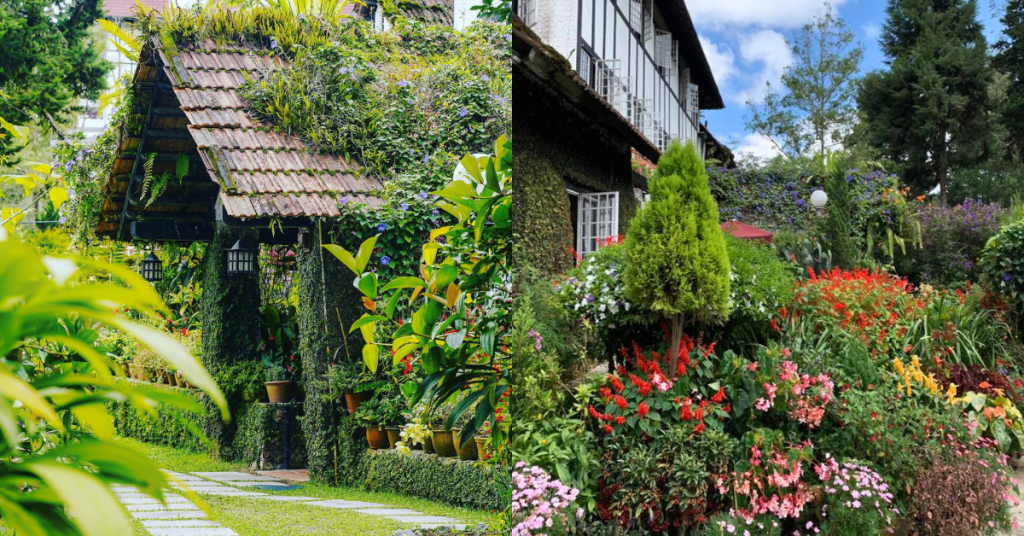
But upon Peter’s departure, the family just knew that he’d wanted it for the children. Alex and his siblings basically grew up there and the hotel echoes their family’s history too. If you look closely, you’ll find pictures of Alex’s mother hidden in plain sight.
All of the rooms and parts of the hotel’s gardens are named after things relevant to the Lee’s. “That’s how we keep the legacy of our family alive through it,” Alex stated. “I’ve spent 15 years looking after this place [and] we’ll keep it for as long as we can.”
- Learn more about Smokehouse Hotel here.
- Read other articles we’ve written about Malaysian startups here.
Also Read: Employees need a Copilot to boost productivity & ease brain drain. This webinar shows how.
Featured Image Credit: Smokehouse Hotel
It started as a temporary project for disaster relief, now it’s a 9 Y/O M’sian social enterprise

When it comes to dealing with natural disasters, providing aid swiftly and effectively is crucial. But what happens when the traditional methods fall short?
Kembara Kitchen, a Malaysian initiative founded nine years ago, has risen to meet this challenge and pioneered innovative solutions to address the gaps in disaster relief.
At its start, Kembara Kitchen was founded by a group of friends with diverse backgrounds spanning from the security industry to headhunting and business.
Now, William Cheah and his wife, Chan Yi Lyn, are the only two actively involved full-time, with two others serving as silent partners contributing valuable expertise.
The shift towards innovation
Kembara Kitchen was originally founded as a catering company. The journey began during the 2015 floods in Kelantan when the founders set up a field kitchen to serve victims with hot meals.
However, they quickly realised that traditional F&B practices were inadequate for disaster situations.
“For example, any normal F&B outlet would have standard equipment such as a cold storage facility or even a small fridge. However, at a disaster site, a field kitchen would most probably not even have electricity, much less a fridge, something that our thought process would take for granted.”
“Along the way, we realised even a field kitchen would not be able to serve the needs in the future. While we still maintain the field kitchen concept, we needed something more viable,” said William.
The lack of infrastructure and logistical challenges prompted them to pivot, leading to the development of ready-to-eat meals as a primary component of their aid efforts.
They came up with Santapan, a commercial arm of Kembara Kitchen which utilises retort technology to produce cost-effective and long-lasting meals.
Retorting is the thermal processing of low-acid foods prone to microbial spoilage in hermetically sealed (airtight) containers to extend their shelf life.
This technology was invented by the US army in 1960s for storing military rations and has since revolutionised food and beverage packaging in the ready-to-eat packaged food segment.

The proceeds from Santapan are then channeled towards the production of Hero Meals which are provided free to disaster victims.
William added that they try to minimise the costs so that every ringgit spent by the donor goes further.
According to him, Hero Meals can be deployed ahead of any disaster because they can last for at least 1.5 years without the need for refrigeration, are easy to store, countable, and simple to transport.
In a very short period of time, this innovation has enabled them to send food aid not only to those affected in Malaysia but internationally as well.
“Just last year we managed to send about 10,000 Hero Meals to Turkey via our Malaysian contingent during the Turkish Earthquake. Currently, we also have already completed three shipments for Palestine via a government-led initiative called Ops Ihsan, with a total of 15,000 meals since the conflict began in October last year. We are expecting to send the fourth shipment in July or August this year,” he added.
Besides providing food aid, Kembara Kitchen identified broader community needs, including infrastructure development in out-of-the-way places such as solar lights and running medical outreach programmes with their medical partners.
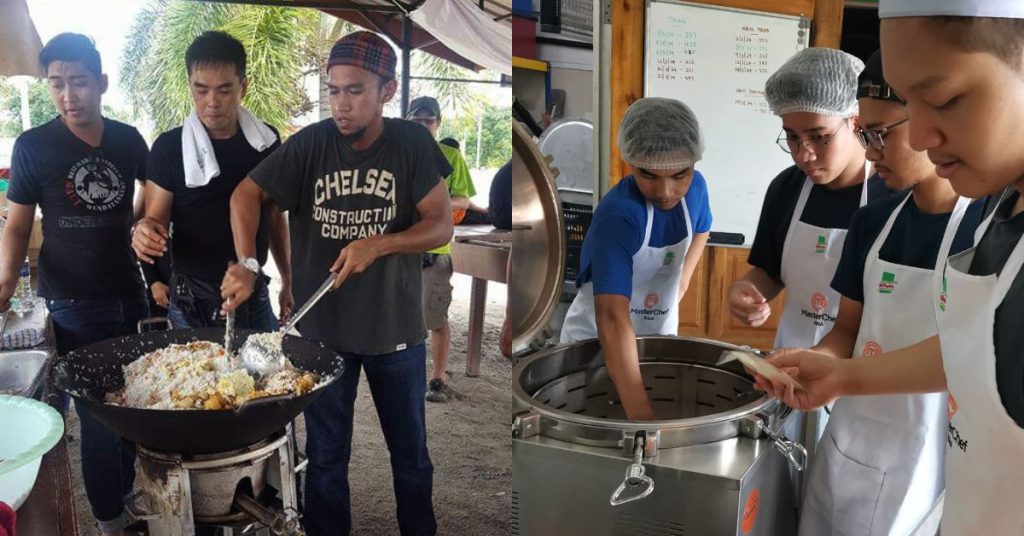
“We are also constantly looking at other forms of assistance, services and products which we can develop at a lower cost but remain effective and efficient. There isn’t any specific limit to it actually because the needs vary from community to community.”
“However, food aid remains our core and is almost always the first method we employ during our first contact with new communities,” the founder said.
Guided by principles for a sustainable model
While Kembara Kitchen operates as a business, their clients are donors who purchase products and services, redirecting them to those in need.
This allows them to reinvest profits into further aid efforts, creating a sustainable cycle of support.
Their approach is guided by their “3As” principle: Affordability, Availability, and Access. This helps the team easily identify what’s missing from a situation and channel aid accordingly.
For instance, they initiated a program called Nafas during the pandemic. It provided free transportation for COVID-19 patients who couldn’t afford it or when ambulance services were unavailable due to high demand.
Within 30 days, the initiative expanded from four volunteer vehicles in Klang Valley to nine, with four vans in Johor Bahru and six vans in Penang. The project continued for about three months until the affordability and availability concerns were resolved, he said.
Braving the storm
Despite their achievements, Kembara Kitchen faces ongoing challenges in building awareness around their commercial products and achieving financial sustainability.
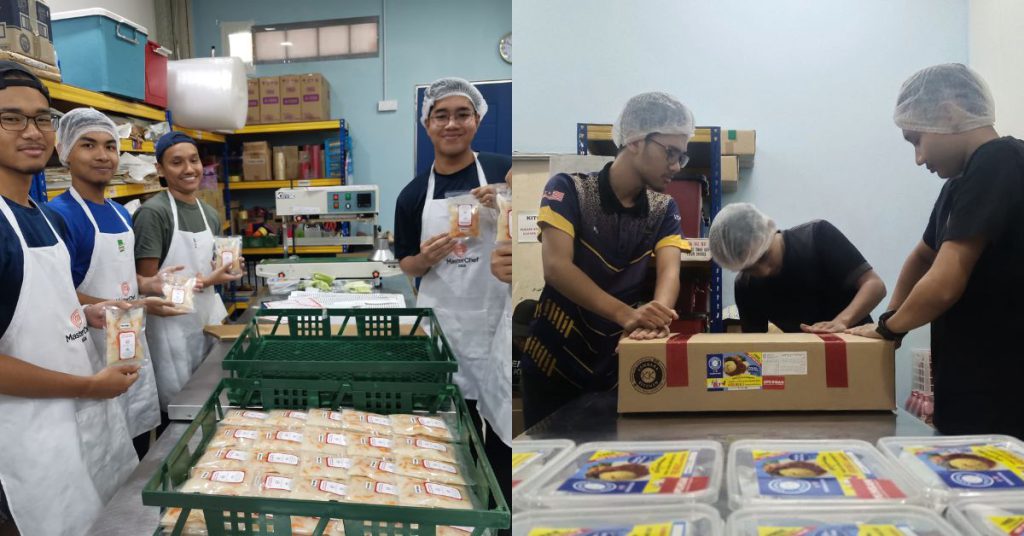
“There has never been a year when the need for our community and disaster aid has lessened. It has always grown, regardless if it was the field kitchen, Hero Meals, or even the non-food aids.”
“This meant that the growth of our direct commercial activities that were not community-based, always played second fiddle,” he shared.
William also said that they have become a victim of their own success.
“When people think of Kembara Kitchen, foremost in their minds is about community work and disaster relief. Seldom do they think of us first when it comes to catering for their functions. For example, we have met some of our long-time supporters who didn’t even realise we did catering.”
“There is a much older similar ready-to-eat product, which carries the name Kembara as a brand. I have lost count the number of times people have messaged me how they were supporting our effort by purchasing our commercial product but showing me the other one,” he expressed.
He said there have been days when they have contemplated changing the name of their organisation, but they realised that Kembara Kitchen has become synonymous with community service with a lot of goodwill. It meant something special to a lot of people, not just them.
However, building awareness around their commercial products, like Santapan meals, remains a priority, alongside sustaining financial independence.
Looking ahead and embracing change
Undeterred by their initial struggles, their commitment to innovation and social impact has propelled them forward.
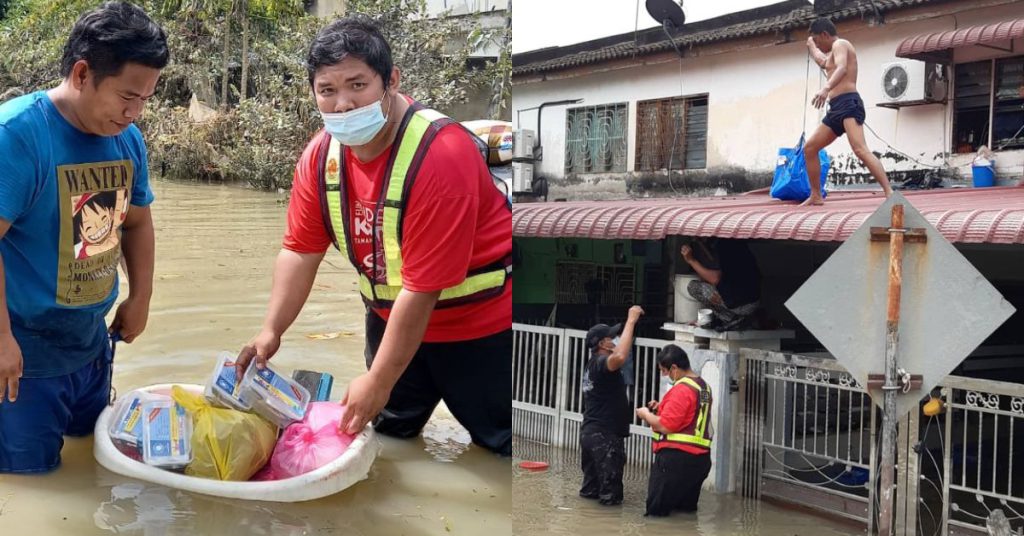
Startup capital of approximately RM60,000 was invested in a practical but basic catering kitchen, with subsequent investments in equipment, facilities, and vehicles for aid delivery.
Over the years, Kembara Kitchen’s revenue has seen a steady growth, from below RM300,000 in the first three years to around RM800,000 during the COVID-19 years, according to William.
This was largely due to the introduction of Hero Meals and Santapan. However, profitability remains elusive, as much of their gross profit is channelled back into community work and operational improvements.
Looking ahead, Kembara Kitchen aims to strengthen existing products and partnerships while continuing to prioritise social impact.
Their journey from ad-hoc volunteers to pioneering social entrepreneurs exemplifies the transformative power of innovation and compassion in addressing humanitarian crises.
- You can learn more the business here.
- Read other articles we’ve written about Malaysian social enterprise here.
Also Read: Employees need a Copilot to boost productivity & ease brain drain. This webinar shows how.
Featured Image Credit: Kembara Kitchen / William Cheah and Chan Yi Lyn
You’ve seen head spas trending on TikTok, here are 7 places to try it out in Klang Valley

My obsession with head spas started with ASMR videos. I would spend hours, mesmerised, watching videos featuring head spa content where the customer would get their scalps thoroughly cleaned and their temples thoroughly massaged.
I got my first taste of it in person last year, and you can read all about my glorious experience here. It was so good that I went again earlier this year as a birthday treat.
As of late, it seems like many others have also joined me on this head spa craze, with more and more businesses starting to offer it. Instead of just content from Japan, nowadays, I get videos from KL-based brands offering head spa services on my For You page.
Good things shouldn’t be kept to oneself, so here’s a list of head spas in the Klang Valley area for you to get all your relaxation needs.
1. PAUSE Head Spa

Of course, we’re starting with the head spa I visited last year—PAUSE. Tucked within Society in Mont Kiara, it was founded by Lex Low, who is also the man behind OTHRS. Barbers & School, which ceased its operations last December.
Both times I’ve visited, I’ve been welcomed with a tea as well as some snacks, creating a hospitable experience from the get-go.
They offer an Ayurvedic Head Spa, a Re:Juvenate Head Spa, a Cream Bath, and a Signature Head Spa.
I would say that the experience at PAUSE is more focused on providing a very relaxing experience, rather than being very treatment-based.
That said, they do actually incorporate nourishing products in their service, and I left both times feeling like my scalp is much cleaner and my hair more luscious, but it’s just not the central focus of their offerings.
Price: Starts at RM180
Location: 4, Jalan Kiara 1, Society, Mont Kiara, 50480 Kuala Lumpur
Where to book: Website, WhatsApp
Contact: +6010-881 5407
2. Walking on Sunshine
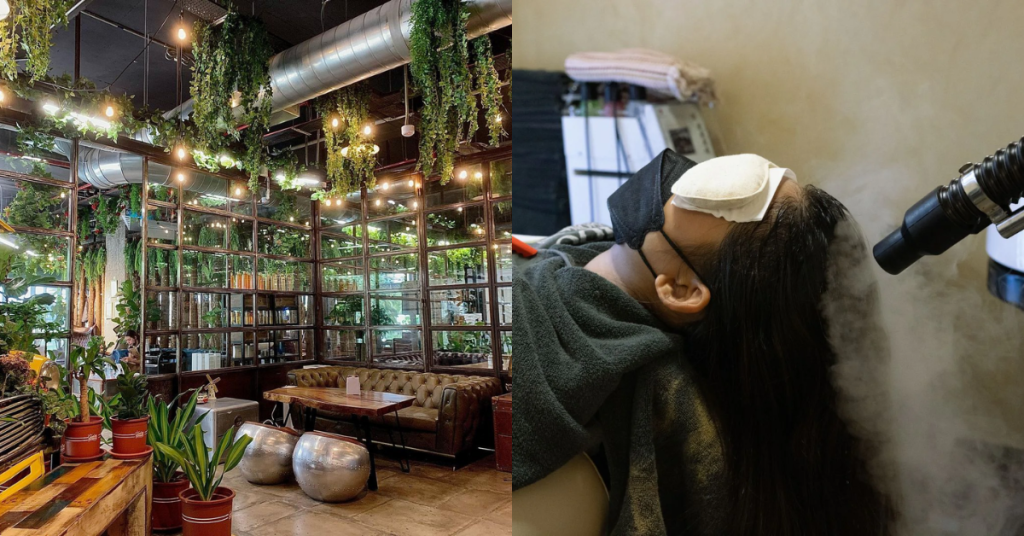
Also in Mont Kiara is Walking on Sunshine, a garden-themed salon in 163 Retail Park.
Walking on Sunshine is from Singapore, founded by serial entrepreneur Luke Yi who is also behind a Korean fried chicken chain, Chicken Up.
At its Malaysian location, Walking on Sunshine offers typical salon services such haircuts, treatments, and colouring services.
The Premium Headspa they offer (RM150) features extra frills such as a headlift, and hand and shoulder massage. It also makes use of unique concepts like head-node combing and sensual therapy claw.
There’s also something called the hot steam ion treatment, which is said to improve circulation, loosen congestion, and promote relaxation.
Price: Starts at RM80
Location: 1F-01, 8, Jalan Kiara, Mont Kiara, 50480 Kuala Lumpur
Where to book: WhatsApp
Contact: +6018-669 2000
3. Headspa by One Hair
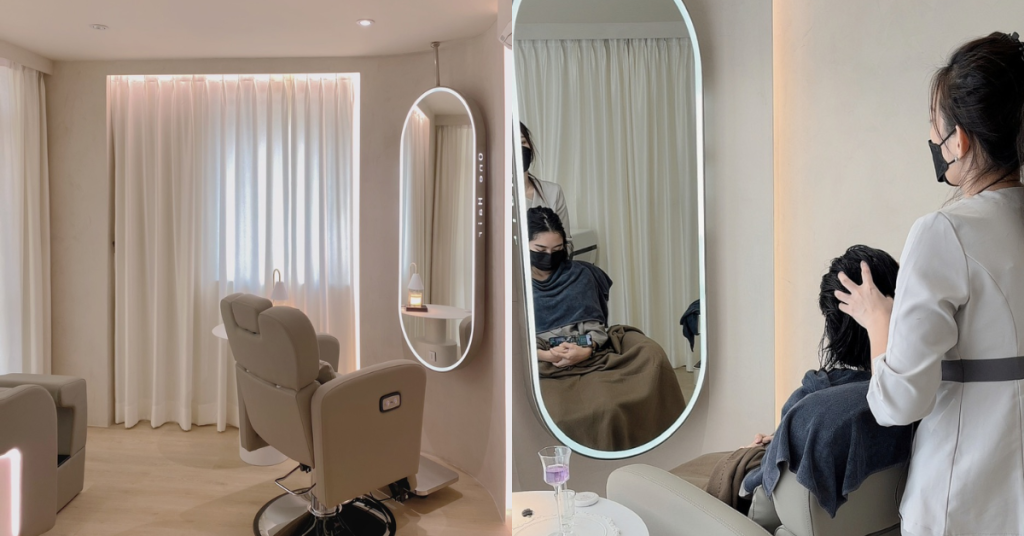
One Hair is a formidable name in the salon scene in the Klang Valley, with three locations and four different sister brands—one of which is Headspa by One Hair.
With a location in Puchong as well as an outlet in Bukit Jalil, Headspa by One Hair specialises in addressing scalp issues. It offers services that target deep repair, detoxification, and nourishing for the scalp, alongside professional scalp analysis to evaluate your scalp’s health.
Private rooms are available here, making it comfortable for Muslimah customers.
Their Instagram claims that they do not engage in aggressive sales tactics, only recommendations tailored to your needs. So if you’re someone who feels anxious about things like that, fret not.
Price: Starts at RM188
Location:
- 16-1, Jalan Puteri 2/6, Bandar Puteri, 47100 Puchong, Selangor
- J-10-01, Pusat Perdagangan Bandar Bukit Jalil, Kuala Lumpur
Where to book: WhatsApp
Contact: +60122746211
4. Urban Retreat Spa
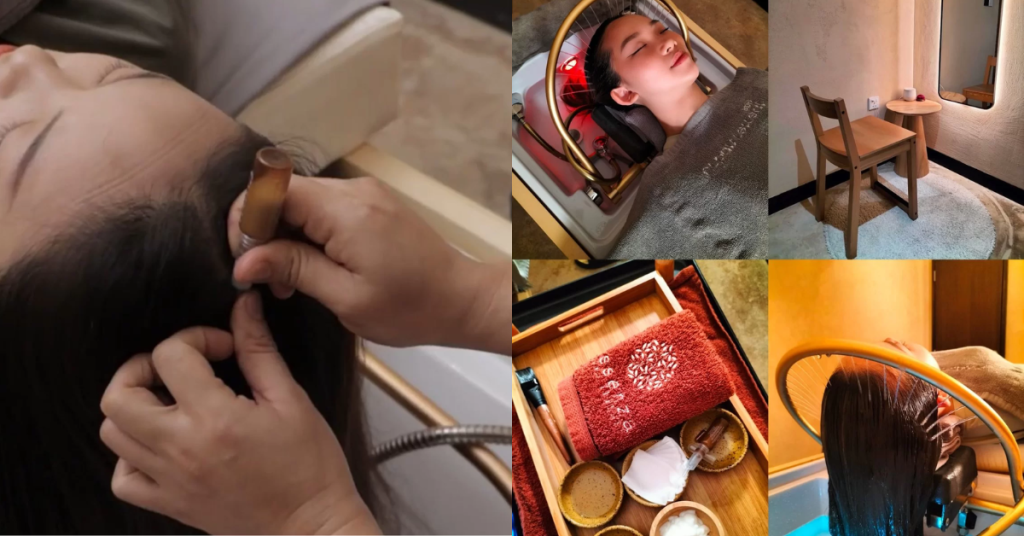
Urban Retreat is a pretty well-known spa brand in Malaysia, with multiple outlets in Mont Kiara, The Curve, and Bukit Jalil. They offer all sorts of massages, from a deep tissue one to a lymphatic detox experience.
Exclusive to their KL East Mall outlet, though, is the Cream Bath Head Spa.
The cream bath also comes bundled with other Urban Retreat offerings such as a 90-minute or 120-minute massage, so if you’re looking for a whole package, look no further.
Price: Starts at RM209
Location: East Mall, Unit 30, Level G2, 823, Jalan Lingkaran Tengah 2, KL Timur, 53100 Kuala Lumpur
Where to book: WhatsApp
Contact: +6012-348 8139
5. TTElephant Headspa

A very new addition to Mid Valley Megamall, the TTElephant brand aims to create “third spaces”, which are areas that transcend the boundaries of home and work.
According to their website, TTElephant has also broadened its scope to encompass sleep therapy and advanced scalp care.
Aside from its Signature Scalp & Head Therapy, it also offers a unique flower bath head therapy.
Price: Starts at RM288
Location: No. 9-6, The Boulevard Mid Valley City, Lingkaran Syed Putra, Utara, 59200 Kuala Lumpur
Where to book: Website
Contact: +6016-206 6916
6. Bora Bora Head Spa

Bora Bora Head Spa has a rather strong TikTok presence, with many relaxing videos showcasing the kind of services they provide.
Based on those videos, it seems like their sessions involve various equipment such as scalp massagers, eye masks, and even… peacock feathers?
They even offer kid’s head spas, so if you have a little one, maybe this can be a fun and relaxing bonding activity.
For RM49, the kid’s head spa makes use of the sensual therapy claw, head gua sha, head massage, herbal shampoo, premium conditioner, and the herbal water head spa.
Price: Starts at RM188
Location: G1-069, Galaxy Ampang Mall, Jalan Dagang 5, Taman Dagang, 68000, Ampang, Selangor
Where to book: WhatsApp
Contact: +60 10-200 2989
7. Beaulax

Located in Shah Alam, Beaulax offers an assortment of beauty services such as nails and waxing. However, its head spa service is what we want to focus on today.
There’s actually quite an assortment of head spa offerings on the menu here. Namely, they are the Ayurrelax, Aura Bunga, Growth Ritual, Scalp Fix, Mind Reset, Head & Body, Scalp Cleanse, Herbal Retreat, and Repair & Relax. These all have different focuses with different price points and durations, so there’s something for everyone.
Beaulax offers various couple packages as well, making it a great place to relax with a significant other, or maybe a friend.
Price: Starts at RM199
Location: UG-D13B, Utropolis Marketplace, Utropolis, 40150 Shah Alam, Selangor
Where to book: WhatsApp
Contact: +60 16-554 2471
Rest is to prepare for a longer journey
And before you forget, Mother’s Day is actually coming up soon (May 12, mark your calendars everyone). So, why not book a relaxing head spa for you and your mum?
But you don’t have to wait for a special occasion to pamper yourself either. A little self-care now and again might do wonders in keeping you refreshed and ready to tackle the next challenge.
- Read other lifestyle articles we’ve written here.
Also Read: How financial institutions & universities are reshaping their network through AI-native solutions
Featured Image Credit: PAUSE Head Spa / Urban Retreat Spa / TTElephant Head Spa